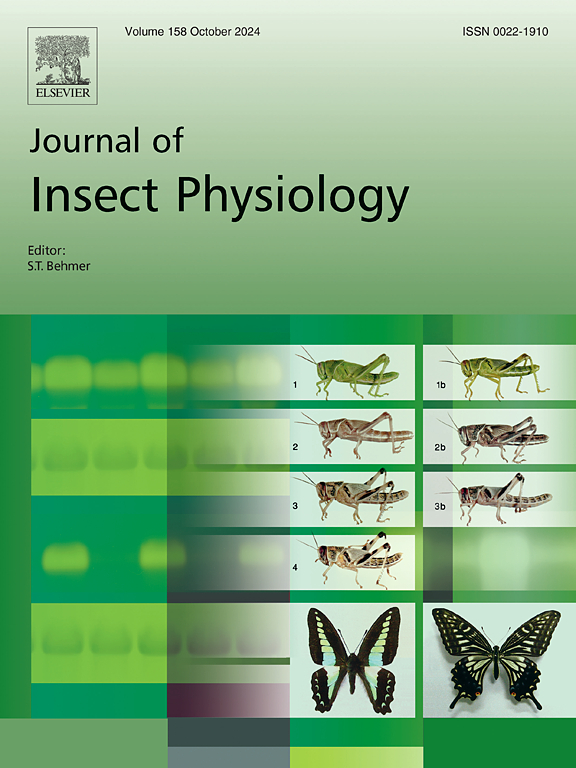Sugar response and gustatory gene expression in the stingless bee Tetragonisca fiebrigi
IF 2.3
2区 农林科学
Q1 ENTOMOLOGY
引用次数: 0
Abstract
Sugar detection and gustatory responsiveness are critical for foraging success in bees, influencing their ability to locate and exploit nectar and pollen sources. Here, we investigated the sugar response thresholds and the expression of two candidate gustatory receptor genes (TfieGr1 and TfieGr3) in the antennae and proboscises of foragers of the stingless bee Tetragonisca fiebrigi. Proboscis extension assays revealed that returning pollen foragers (PF) exhibited lower sugar response thresholds and higher sensitivity to sucrose, glucose, and fructose than returning nonpollen foragers (NPF), suggesting that NPF could be mainly engaged in finding high-quality nectar sources. In addition, more than 60 % of PF responded to all sugars tested, while NPF showed a strong preference for sucrose and glucose, with only 4 % responding to fructose. Molecular experiments revealed no significant differences in TfieGr1 and TfieGr3 expression levels between PF and NPF in either sensory tissue. These findings suggest that other gustatory receptors or mechanisms, such as central processing or internal nutrient sensing, may underlie the observed behavioral differences. Our results highlight potential species-specific adaptations in sugar detection mechanisms and underscore the importance of integrating behavioral, molecular, and ecological approaches to understanding foraging strategies in stingless bees.

无刺蜜蜂糖反应及味觉基因表达
糖检测和味觉反应对蜜蜂的觅食成功至关重要,影响它们定位和利用花蜜和花粉来源的能力。本文研究了无刺蜜蜂触角和喙中两个候选味觉受体基因(TfieGr1和TfieGr3)的糖反应阈值和表达。结果表明,与非花粉觅食蜂(NPF)相比,返回花粉觅食蜂(PF)对糖的响应阈值较低,对蔗糖、葡萄糖和果糖的敏感性较高,表明NPF可能主要用于寻找优质花蜜来源。此外,超过60%的PF对所有测试的糖都有反应,而NPF对蔗糖和葡萄糖表现出强烈的偏好,只有4%对果糖有反应。分子实验显示PF和NPF在两种感觉组织中TfieGr1和TfieGr3的表达水平无显著差异。这些发现表明,其他味觉受体或机制,如中央处理或内部营养感知,可能是观察到的行为差异的基础。我们的研究结果强调了糖检测机制中潜在的物种特异性适应,并强调了整合行为,分子和生态方法来理解无刺蜜蜂觅食策略的重要性。
本文章由计算机程序翻译,如有差异,请以英文原文为准。
求助全文
约1分钟内获得全文
求助全文
来源期刊

Journal of insect physiology
生物-昆虫学
CiteScore
4.50
自引率
4.50%
发文量
77
审稿时长
57 days
期刊介绍:
All aspects of insect physiology are published in this journal which will also accept papers on the physiology of other arthropods, if the referees consider the work to be of general interest. The coverage includes endocrinology (in relation to moulting, reproduction and metabolism), pheromones, neurobiology (cellular, integrative and developmental), physiological pharmacology, nutrition (food selection, digestion and absorption), homeostasis, excretion, reproduction and behaviour. Papers covering functional genomics and molecular approaches to physiological problems will also be included. Communications on structure and applied entomology can be published if the subject matter has an explicit bearing on the physiology of arthropods. Review articles and novel method papers are also welcomed.
 求助内容:
求助内容: 应助结果提醒方式:
应助结果提醒方式:


